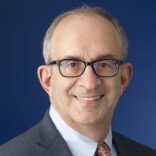The recent population survey conducted by the UJA-Federation of New York — “Jewish Community Study of New York: 2011” — contains some findings that have not been discussed extensively. One of these trends is the significant change in educational attainment since the last survey was compiled a decade ago. Reporting on “Secular Education,” the 2002 survey documented that, “Gender differences in education have all but disappeared for those younger than 65; the percentage of men and women reporting a master’s or doctoral degree is about the same.”
Ten years later, the current survey describes a positive trend that represents a significant transformation. Higher education is increasingly pursued and is becoming more accepted among Orthodox groups that now comprise nearly one third of the entire New York Jewish community.
The differences in levels of educational attainment reported in the study among “Chasidic,” “Yeshivish” and “Modern Orthodox” groups are striking. Sixteen percent of chasidic men earned a college degree, as compared to 45 percent of Yeshivish men, 55 percent of Modern Orthodox, and 63 percent of non-Orthodox.
While the numbers of yeshivish and Modern Orthodox men involved in higher education are greater than those of the Chasidic community, increasing higher educational opportunities and access will empower more students to achieve their academic and professional goals.
However, and perhaps even more important for the future of a community, is that the level of advanced degrees (master’s, Ph.D., law and medical, etc.) among Modern Orthodox women is 41 percent — not only 10 percent higher than Modern Orthodox men but also higher than the percentage of non-Orthodox women.
In addition to the academic achievement of Modern Orthodox women, the study reports that 21 percent of yeshivish women went on to earn advanced degrees. Overall, among chasidic and yeshivish groups, women earned almost the exact same percentage of advanced degrees as men. The aspiring women in these communities not only balance academic demands with family responsibilities, they often pursue advanced degrees to supplement their household income respecting the dedication of their husbands to studying sacred texts.
Continuing to develop academic programs that accommodate the growing acceptance of higher education in the chasidic and yeshivish communities remains an imperative to be fully realized. Chasidic and yeshivish men and women enter the college environment upholding the primacy of their values. They overcome English language barriers in order to master course content.
Some have pursued degrees at community learning resources customized to their lifestyles and religious commitments — learning resources that become portals of discovery and change. But as the Orthodox population grows, its learning resources need to not only be expanded but re-envisioned.
In addition to these educational trends, some of the study’s findings are disturbing. The proportion of poor Jewish households is higher than it was 10 years ago, and the highest rate of poverty among Orthodox Jews is found in chasidic households.
As education in general, and higher education in particular, gain more acceptance in the chasidic community, these opportunities for advancement represent effective ways in which the ongoing problem of poverty can be addressed. Creating degrees and certificates that reflect the values and educational capabilities of the chasidic community would be steps in the right direction to begin to disrupt the cycle of poverty.
Innovative educational opportunities have the potential to transform lives. A growing and diverse array of educational opportunities would not only influence the future development of the New York Jewish community, but the Jewish community as a whole.
Dr. Alan Kadish is president and CEO of Touro College and University System.
The New York Jewish Week brings you the stories behind the headlines, keeping you connected to Jewish life in New York. Help sustain the reporting you trust by donating today.





